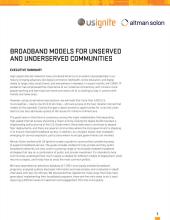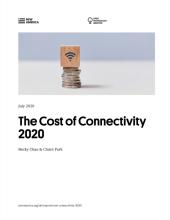Broadband Models for Unserved and Underserved Communities

"Broadband Models for Unserved and Underserved Communities," [pdf] a white paper from US Ignite and Altman Solon, explores the various models that cities can employ to connect their residents and businesses.
The paper covers five approaches that communities can take to improve Internet access, from full private broadband to full municipal broadband with varying types of public-private partnerships in between. Of all the well-connected American cities (where 50% of residents have access to 250 Megabits per second broadband speeds), the paper finds that 8% are served a form of municipal network.
To help local government officials figure out which model is right for their community, US Ignite and Altman Solon include a number of helpful charts, decision trees, and other considerations.
Regardless of the exact broadband model, cities can play an important role in connecting underserved communities. The paper ends:
Although the digital divide that remains in our country is unlikely to be fully closed soon, municipalities can still be powerful agents of change. We hope this study will pass along the hard-won lessons of prior programs and aid municipalities considering broadband expansion to better serve their residents. The faster we work together to bridge the digital divide, the sooner we all benefit from the technologies of the future.
Download "Broadband Models for Unserved and Underserved Communities" at the link or below.



